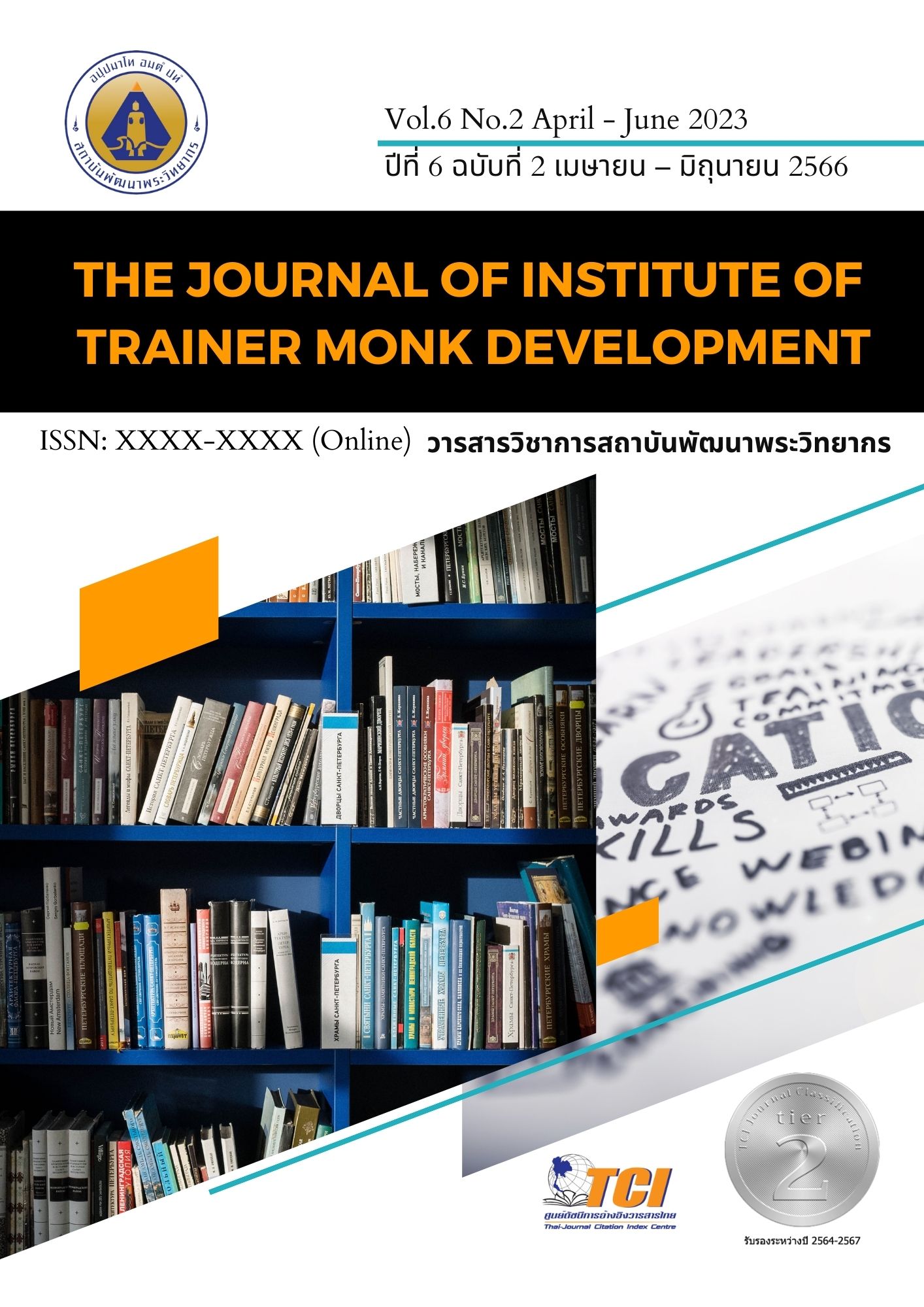Hermaphrodites and Benightment in Theravada Buddhist Philosophical Point of view
Main Article Content
Abstract
In this article, the author presents some arguments against some Theravada Buddhist scholars. Who had a view towards the Chancellor that he could not attain enlightenment in Theravada Buddhism; this group of scholars claimed that Paṇḍaka (eunuch, hermaphrodite) were a group of people with thick passions. It's the result of past lives. Those who cannot teach Making it impossible to attain Dhamma in this life but the author proposed that if explained through a philosophical perspective, In particular, the use of metaphysical interpretations of human nature and human reality, such as the four elements, five-aggregate, in the viewpoint of Theravada Buddhist philosophy. It will be found that the Paṇḍaka can attain Dhamma as well as male and female because, in metaphysics, Buddhism views all human beings, regardless of true male and female or group of Paṇḍaka; there is a nature of humanity that is not different. And that nature is the fundamental truth that every human being, regardless of gender, can access and understand with his intelligence. Access to nature and the reality of life.
Article Details

This work is licensed under a Creative Commons Attribution-NonCommercial-NoDerivatives 4.0 International License.
บทความที่ได้รับการตีพิมพ์เป็นลิขสิทธิ์ของวารสารวิชาการสถาบันพัฒนาพระวิทยากร
ข้อความที่ปรากฎอยู่ในบทความที่ได้รับการตีพิมพ์ในวารสาร ถือเป็นความรับผิดชอบของผู้เขียนบทความ และข้อคิดเห็นนั้นไม่ถือว่าเป็นทัศนะและความรับผิดชอบของกองบรรณาธิการวารสารวิชาการสถาบันพัฒนาพระวิทยากร
References
ชาญณรงค์ บุญหนุน. (2557). บทบรรณาธิการ “ห้ามกะเทยเป็นพระ ห้ามพระเป็นกะเทย”. วารสารพุทธศาสน์ศึกษา จุฬาลงกรณ์มหาวิทยาลัย, 21(2): 5-10.
พระมหาอดุลย์ ยโสธโร (บุตรตะเคียน). (2549). “การศึกษาเชิงวิเคราะห์เรื่องบัณเฑาะก์กับการบรรลุธรรม”. วิทยานิพนธ์พุทธศาสตรมหาบัณฑิต. บัณฑิตวิทยาลัย: มหาวิทยาลัยมหาจุฬาลงกรณราชวิทยาลัย.
พระมหาวิสูตร วิสุทฺธิปัญฺโญ. (2554). การศึกษาเชิงวิเคราะห์เรื่องบัณเฑาะก์ในคัมภีร์พระพุทธศาสนา. วิทยานิพนธ์ศาสนาสตรมหาบัณฑิต. บัณฑิตวิทยาลัย: มหาวิทยาลัยมหามกุฏราชวิทยาลัย.
พระมหาสมเจต สมจารี (หลวงกัน). (2559). บัณเฑาะก์กับการบรรลุธรรมขั้นสูงในพุทธศาสนาเถรวาท. ศึกษาศาสตร์ มมร, 4(2): 151-165.
คณะกรรมการคาทอลิกเพื่อคริสต์ศาสนาธรรม แผนกพระคัมภีร์. (2557). พระคัมภีร์คาทอลิก: ฉบับสมบูรณ์.
มหาจุฬาลงกรณราชวิทยาลัย. (2539). พระไตรปิฎกภาษาไทย ฉบับมหาจุฬาลงกรณราชวิทยาลัย. กรุงเทพฯ: โรงพิมพ์มหาจุฬาลงกรณราชวิทยาลัย.
เด่นชัย ประทุมแสง. (2560). กระบวนการสร้างอัตลักษณ์เชิงพุทธของกลุ่มความหลากหลายทางเพศในสังคมไทย. วิทยานิพนธ์พุทธศาสตรดุษฎีบัณฑิต สาขาวิชาพระพุทธศาสนา. บัณฑิตวิทยาลัย: มหาวิทยาลัยมหาจุฬาลงกรณราชวิทยาลัย.
สมเด็จพระพุทธโฆษาจารย์ (ป.อ.ปยุตฺโต). (2551). พุทธธรรม. (พิมพ์ครั้งที่ 15). กรุงเทพมหานคร: สหธรรมิก.
สมเด็จพระพุทธโฆษาจารย์ (ป.อ.ปยุตฺโต). (2561). พจนานุกรมพุทธศาสน์: ฉบับประมวลศัพท์. (พิมพ์ครั้งที่ 31). กรุงเทพมหานคร: สหธรรมิก.
สมภาร พรมท. (2548). พุทธปรัชญา: มนุษย์ สังคม โลก และปัญหาทางจริยธรรม. (พิมพ์ครั้งที่ 2). กรุงเทพมหานคร: ศยาม.
อรรถกถา. (2548). พระวักกลิเถระ. สืบค้นข้อมูลเมื่อวันที่ 14 ธันวาคม 2565 จาก https://84000.org/tipitaka/attha/attha.php?b=25&i=35&p=11


